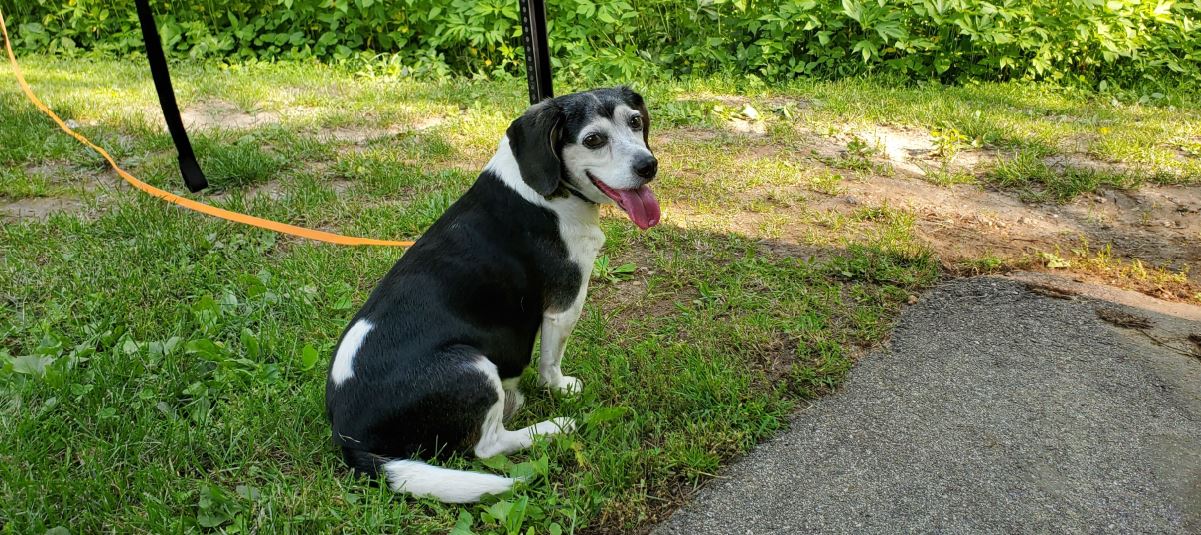
During the first week of June, we took the camper to Salt Fork State Park for a few days. There is something odd about the park, and it had nothing to do with the Summer Sasquatch trail run held that weekend. Apparently marketing Bigfoot sightings is a priority at Salt Fork State Park.
It seems like Salt Fork started with money and ambition, but could not follow through.
The campground shower facilities are splendid.
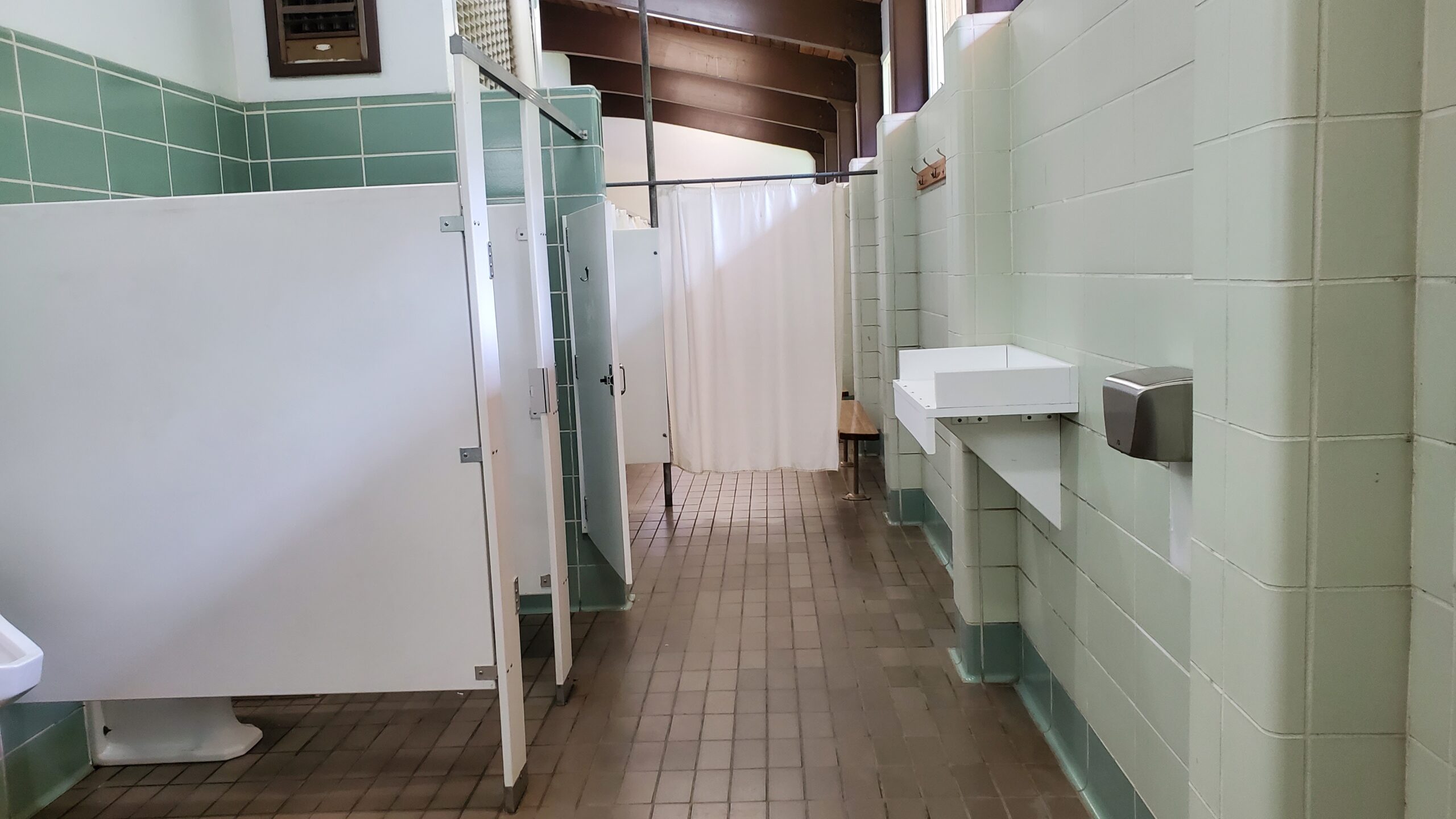
Flush toilets, plenty of hot water for the showers, no complaints here at all. The numerous small bathrooms scattered around the campground have pit toilets, but they are okay in a pinch.
RV camping all occurs on top of a ridge line. The woods around the campground are all on a steep hill. Taking a bike to Salt Fork is pointless. The park is huge and the roads all have long hills. Electric bikes were popular, but nothing is nearby.
The campground loops are one of the strange things. I have a premium spot because there is a tree for shade, but my RV pad is only about 25 feet deep. My pad is two spaces wide because the pad is too short to park my truck in front of the camper. The loop road could have been laid out to provide more room between the road and the edge of the plateau.
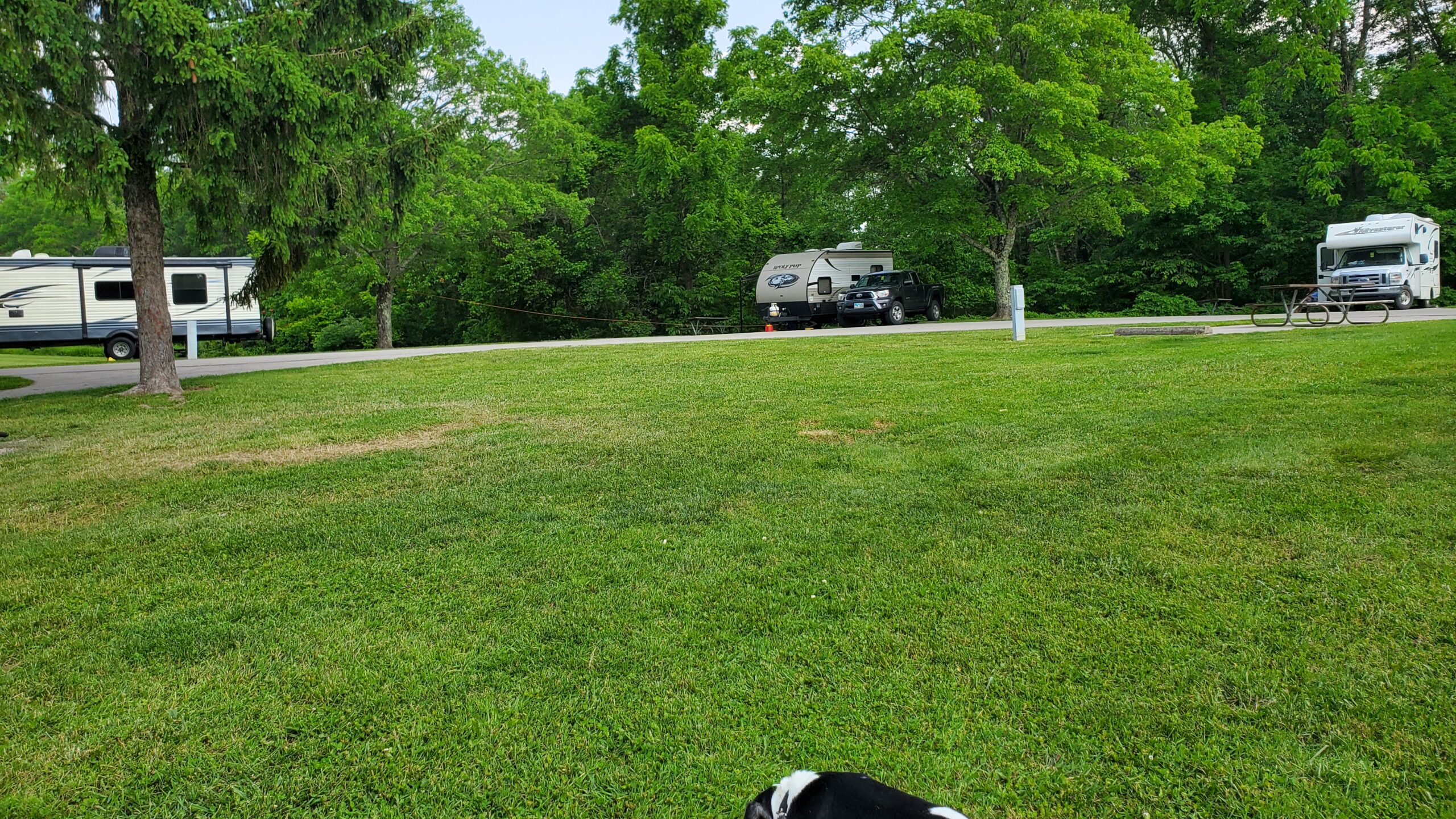
The camper loop is on a spacious plateau, but the area isn’t used very well. All of the RV spots are short, so everyone’s front bumper is just off of the road. Most of the pads could have been extended 20 feet to make get a little distance to the road.
RV spaces are pretty far apart, but there is nothing between them. The camper loop has fewer trees than a golf course. Better parks have deeper pads, a shade tree near each pad and bushes between sites to give a sense of being in nature. Our camper loop seems to have been designed for the convenience of the grass cutting crew.
We visited the dog park, and found it to be a bleak affair. The best thing about it was the sign. Salt Fork does have very nice signs.
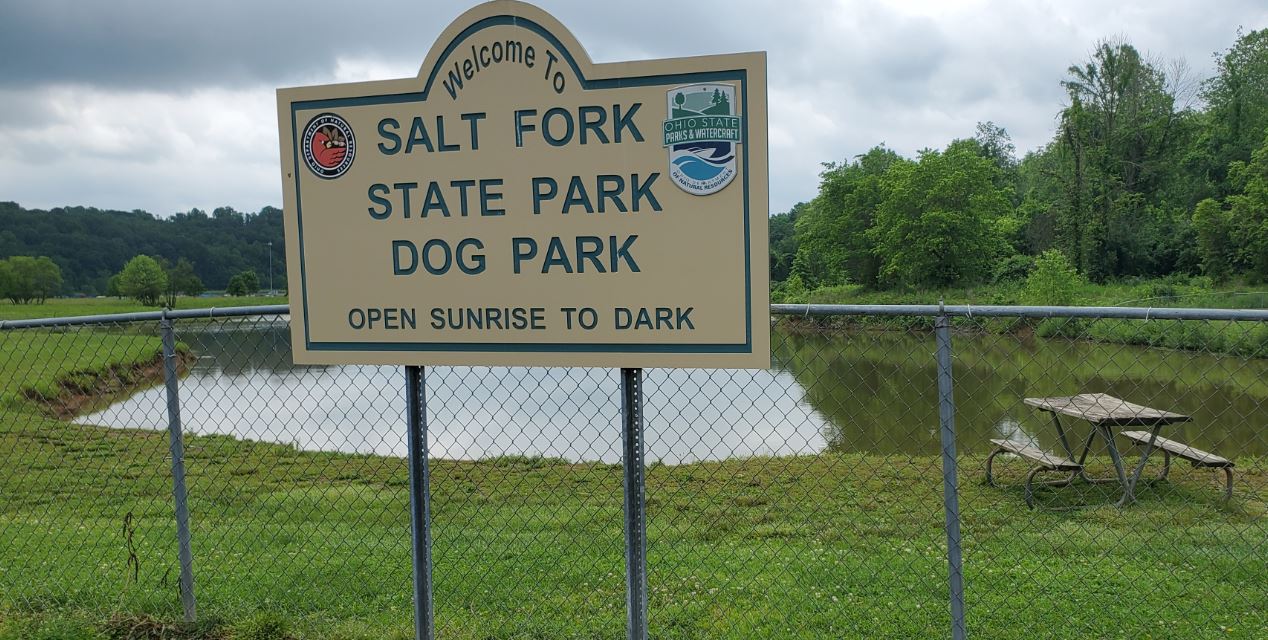
The dog park was so ghetto, our humble beagle wanted to go somewhere else.

The dog park features one spindly tree and two picnic tables. That’s it. In the biggest state park in Ohio, that’s all they could manage. It’s so low-effort, I will put the rest of the photos here.
Adjacent to the dog park, there is a large, unmaintained parking lot. It looks like it could hold 500 cars, but there is no obvious attraction. At the far end of the parking lot, there are a couple of family picnic pavilions that could hold maybe 40 people each.
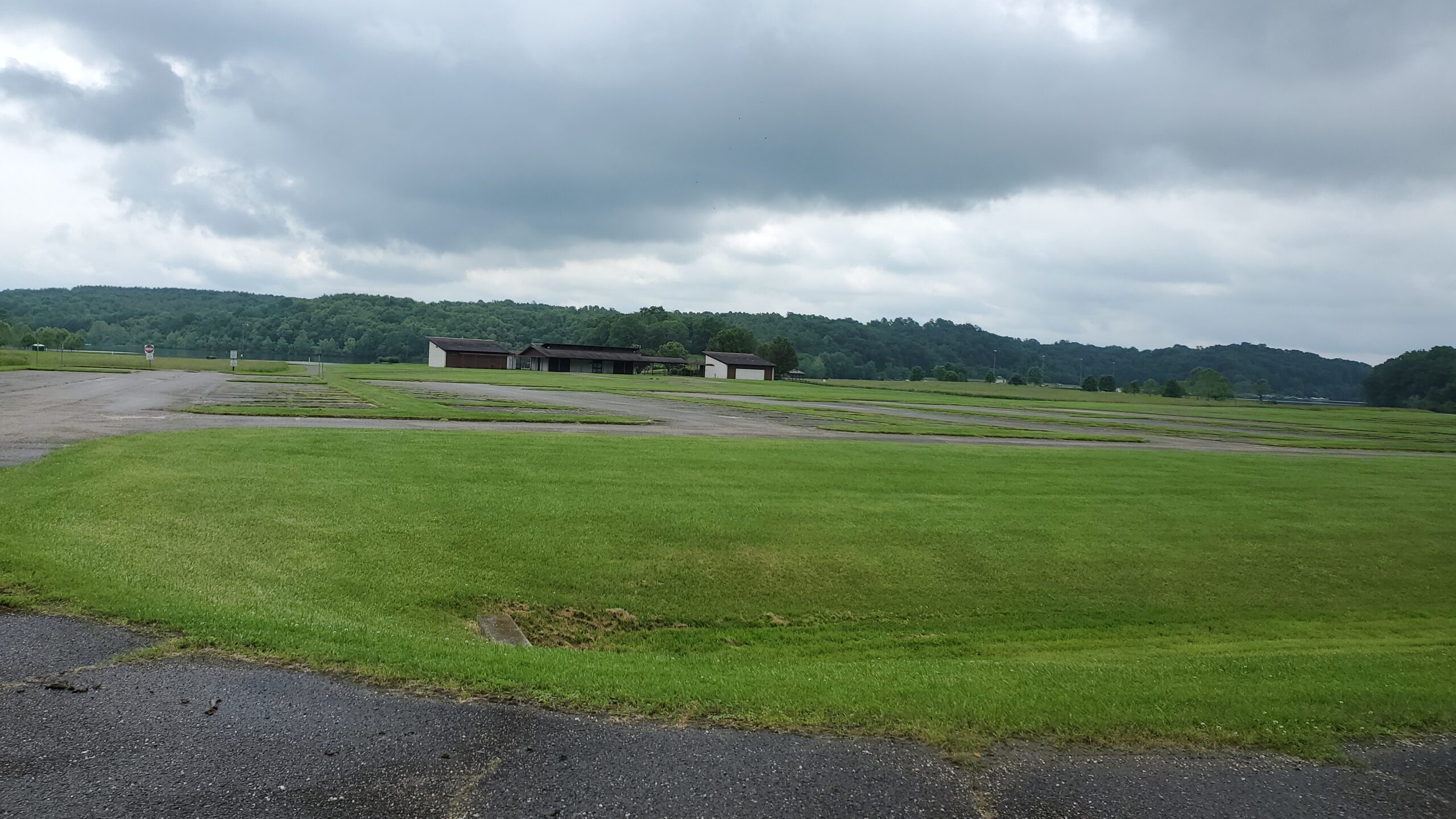
If we ever return to Salt Fork, Pete and I may bring RC planes to fly. Taking off from pavement would be convenient.
Just like the dog park, the sign for the Salt Fork Archery Range was the best thing about this attraction. There were no helpful signs to indicate that the trail into the woods led to a 3-D archery range.
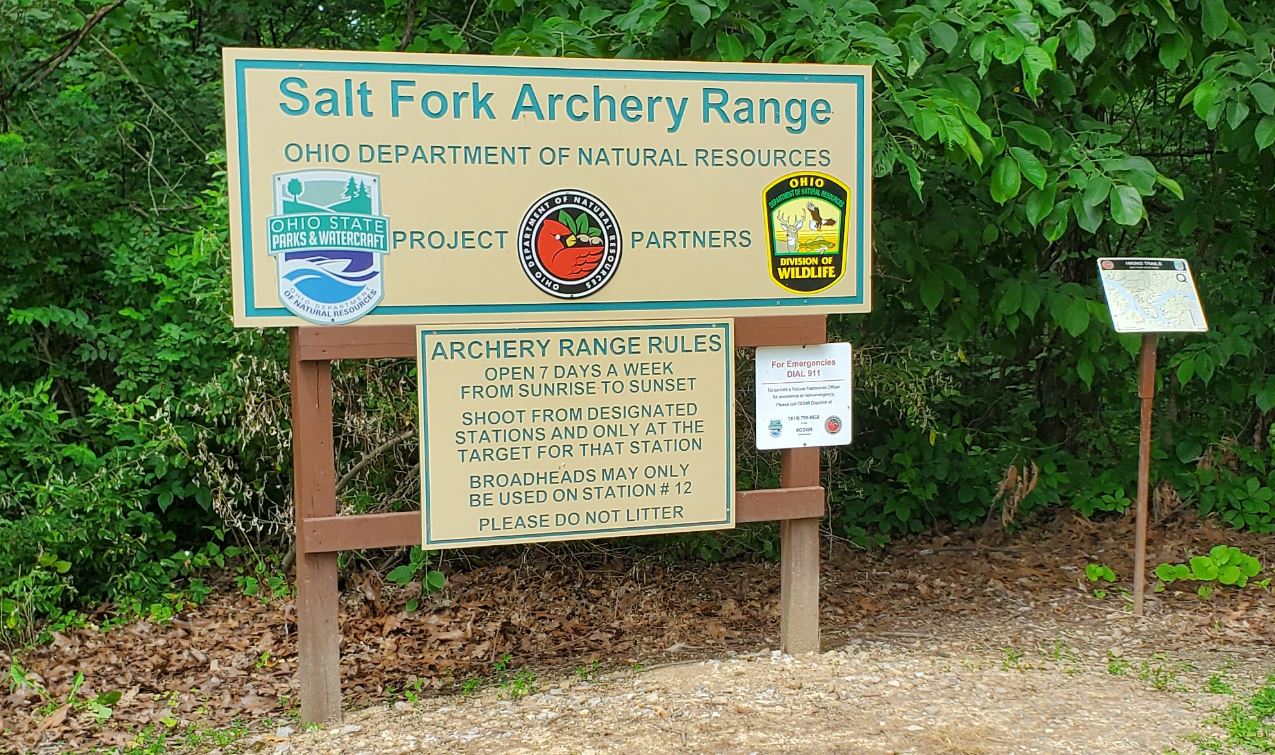
Most state parks that I’ve visited, have a target archery range. That consists of a flat field, with targets at measured distances like 10 yards, 20 yards and so on. Salt Fork has plenty of land for a range like that, but they went with a 3-D range only. A 3-D range is meant to simulate hunting. Targets are at a variety of distances and elevations.
Like the dog park, the archery range is minimally suited to it’s purpose. Unlike the dog park, the grass cutting crew did not design it and nobody maintains it.
Station 11 was a good example of what a 3-D archery range should look like.
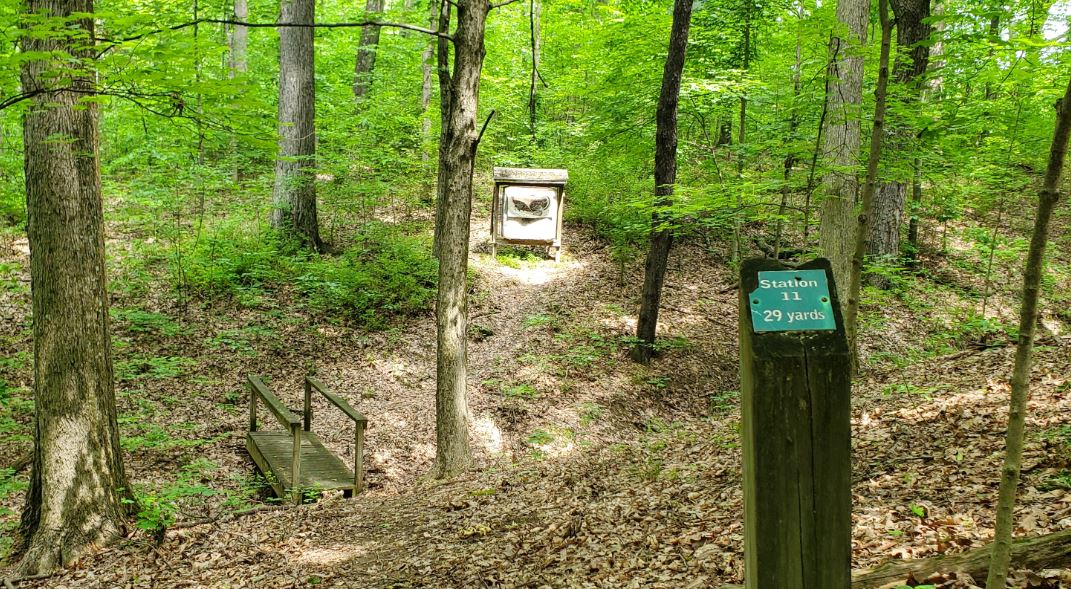
Unfortunately, the other stations weren’t this good. Some were overgrown, so an arrow wouldn’t be likely to reach the target. One had a gully that had to be crossed to retrieve the arrows.
The Salt Fork Archery range report is here
It would be better to have no archery range, than to have this monument to incompetent management.
I don’t know what went wrong at Salt Fork State Park. The reflexive answer is to say that it’s a lack of money. That’s not it. There are areas of the park that are mowed for no obvious reason. The campground really does seem to be configured for convenient lawn mowing.
It would take one worker a day to plant and fence a half-dozen trees in the dog park. It would take an afternoon per month to trim the branches at the archery range. Addressing the lack of trees and foliage in the campground would be an ongoing project, but not expensive.
It’s a shame to see Ohio’s largest state park be so mismanaged. They should do better.
Leave a Reply